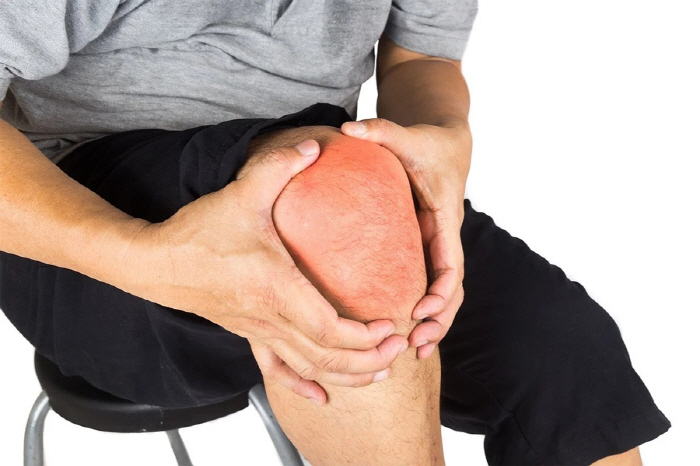Knee that aches when cold wind blows, Himchan Hospital is more sensitive to damaged joint cold
Nov 19, 2025
|
There are also various types of pain such as aches, aches, stiffness, and tingling when moving. A foreign study (Journal of Clinical Medicine 2024) also reported that the lower the temperature, the greater the pain score of knee arthritis patients. This means that the larger the temperature difference, the stronger the knee joint is affected by the external environment.
Kim Yoo-geun, head of the orthopedic clinic at Bupyeong Himchan Hospital, said "In the cold season, the severe pain is a sign that the existing joint, cartilage, and muscle damage have become more sensitive due to the cold."If the knee joint's temperature is maintained properly, the pain can be controlled, so management in daily life is necessary."
◇ Arthralgia worsens as temperature drops...Representative of degenerative knee arthritis and cephalopathy syndrome
When the temperature drops, our body contracts blood vessels to maintain body temperature. In particular, areas with a thin layer of fat, such as knee joints, hinder blood circulation, making it difficult to supply nutrients and pain relief substances to tissues around the joint. At the same time, the joint fluid that makes the joint move smoothly hardens, slowing the movement of the joint, causing the pain to feel particularly severe.
Typical diseases with severe joint pain include degenerative knee arthritis and knee femoral syndrome. Degenerative knee arthritis is a disease caused by the wear and tear of knee cartilage, and symptoms such as cold and aching inside, stiffness, and swelling appear. In the early stages, pain is felt only when walking for a long time or climbing stairs, but when it progresses to the middle stage, the pain becomes more frequent and pain appears even during rest. At the end of the year, cartilage is almost lost, resulting in severe pain and O-shaped leg deformation. In winter, deep pain inside the joint becomes more severe as the viscosity of the joint fluid increases and the muscle strength decreases.
The symptoms of knee anterior pain are characterized by knee femoral syndrome. The patella, a round bone in the knee joint, acts as a lever when moving the knee, and it is a disease in which pain occurs when the patella in front of the knee and the femur in the back are stimulated. It is rarely recognized as a disease because there is no pain in walking, but the pain is severe in the movement of bending the knee, such as going up and down the stairs or kneeling.
If you have never hurt your knee in particular, but you feel pain in the front of your knee, it's often a form of cleft femoral syndrome. If the problem of feeling uncomfortable when bending the knee is repeated in a different way from the general knee arthritis symptoms that cause pain when walking, it is necessary to accurately check the health condition of the knee.
◇ Relax with stretching and hot packs, and you shouldn't ignore the pain that lasts
If you have an existing knee disease, you should focus on management and exercise tailored to the characteristics of each disease to prevent worsening pain in winter. Warm hot packs are effective for preventing joints from stiffening and blood circulation. In particular, it is helpful for degenerative arthritis patients to frequently apply poultice and lower body baths to relieve joint stiffness. In addition, you should strengthen your muscles and maintain an appropriate weight by low-impact exercises such as swimming, aquarobics, and indoor cycling, which have less impact on your joints.
Usually, when a joint is uncomfortable or painful, movement is inconvenient and the amount of activity is reduced, but the vicious cycle of reducing movement weakens the muscles around the joint is repeated. You should start with exercises that can increase joint flexibility, such as stretching, and do aerobic exercises that do not strain your joints or walk lightly.
Kim Yoo-geun, head of the Orthopedic Clinic at Bupyeong Himchan Hospital, said, `Exercising sweating a lot in cold weather can cause a sudden drop in body temperature or a decrease in physical function"In winter compared to other seasons, you need to reduce your exercise intensity by 10-20%, and you need a trick to do it several times."
Although it has not been diagnosed yet, the general public with knee pain also needs to prepare according to the intensity and pattern of the pain. If it's just a cold and stiff level of pain, or if it's only temporary when you're in the cold air, it's better to help blood circulation by keeping warm indoors, warm poultice, and light stretching. However, when swelling, fever, knee locking, rupture, helplessness, and pain during rest appear, it means that the disease has already progressed to a large extent, so you should visit a specialist without delay.
Since cartilage does not regenerate once damaged, it is important to recognize the severe pain in winter as a warning signal for the disease. If customized treatment such as weight control and muscle strength is combined under accurate diagnosis by a specialist, you can maintain a healthy daily life even in winter.
|
This article was translated by Naver AI translator.















